Are Australian equity valuations getting too stretched?
The Australian equity market continues to hit new highs, aided by a powerful global equity upswing and the pivotal US market continuing to scale fresh heights.
Almost all global equity markets have performed above expectations over the past year, with even the much-maligned Chinese equity market joining the upswing over the past month, on expectations of a significant step-up in policy stimulus.
As we have been discussing for some time, the global macro backdrop of moderate but positive economic growth, moderating inflation and an unfolding central bank easing cycle is proving to be a powerful support to the global equity market.
Figure 1: Australian equities have delivered well above average returns over the last 12 months but have lagged global equities
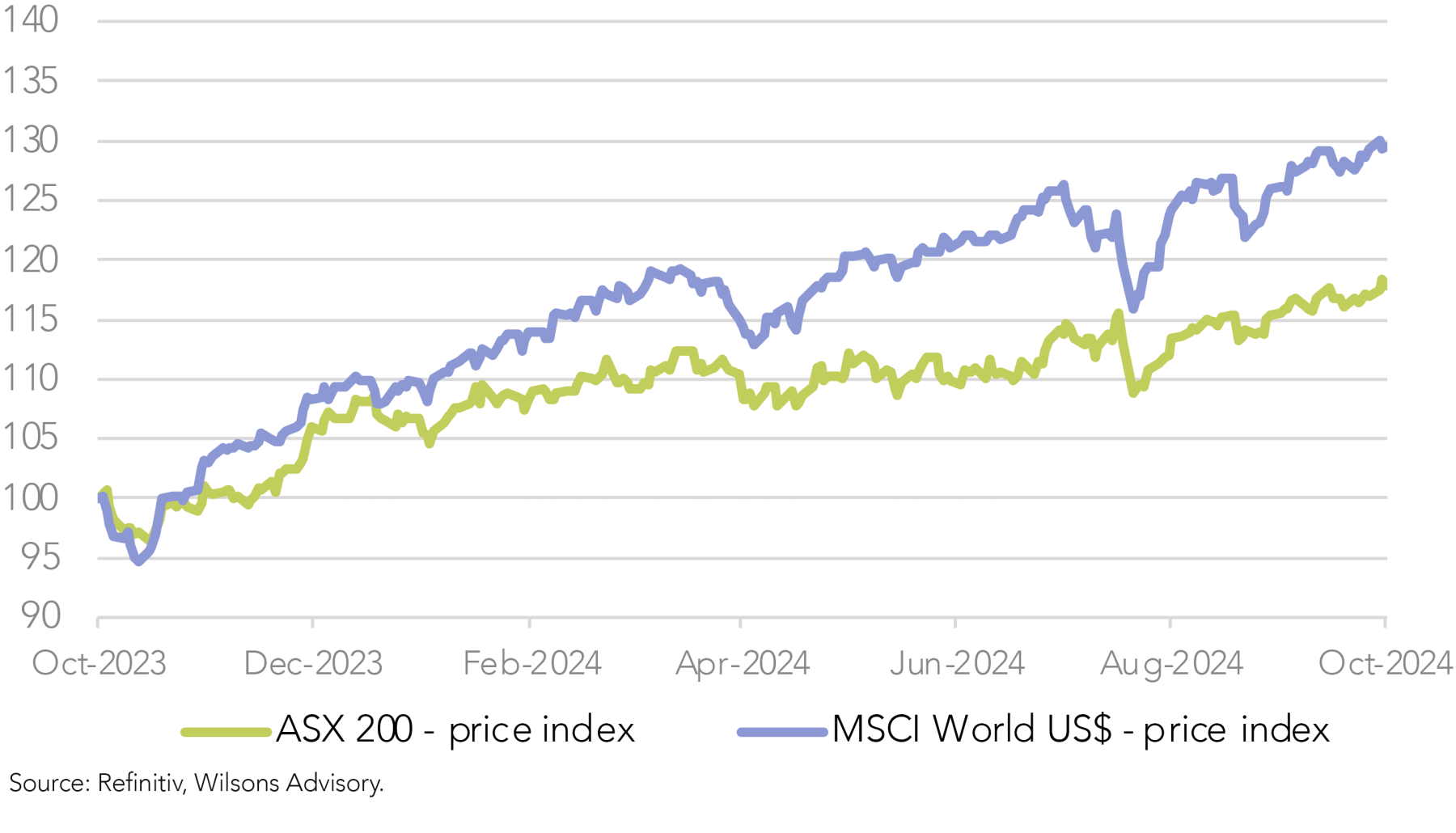
Figure 2: A strong year for global equities typically results in a good year for Australian equities
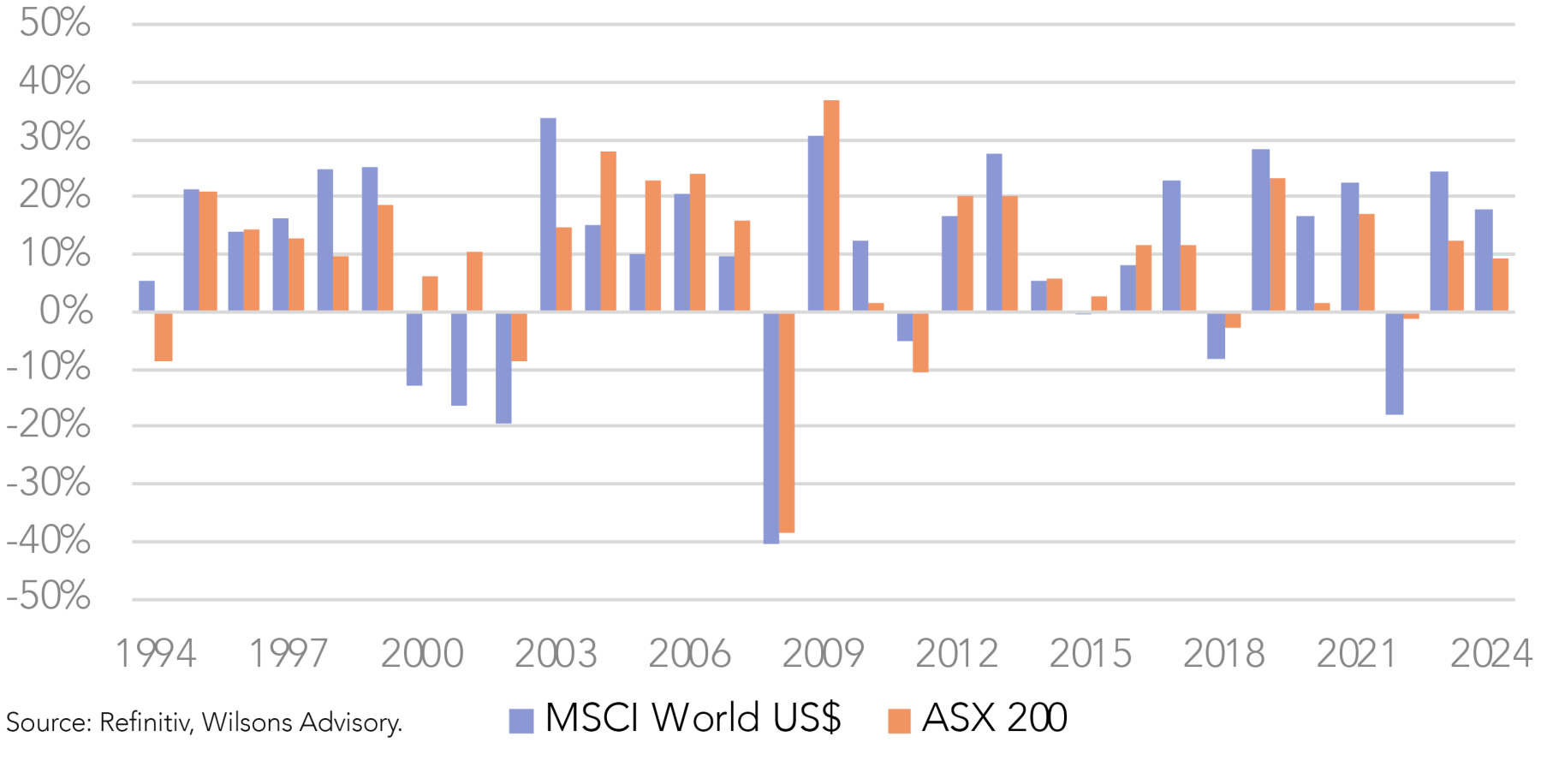
Who needs earnings growth?
While Australia has been strong in an absolute sense, it has lagged the US-driven global rally on a 12 month basis, although the local market has performed in-line with the global equity market over the last three to sixth months. Despite Australia lagging the global equity market over the past year, its strong absolute performance is interesting in the context of the country’s lacklustre earnings growth backdrop.
The Australian equity market looks set to record zero earnings growth in CY24. CY25 earnings growth is expected to improve, but only to a still-moderate 5%. This compares to an index price gain over the past 12 months of 18%.
Figure 3: The Australian market has been rising despite flat to falling earnings growth
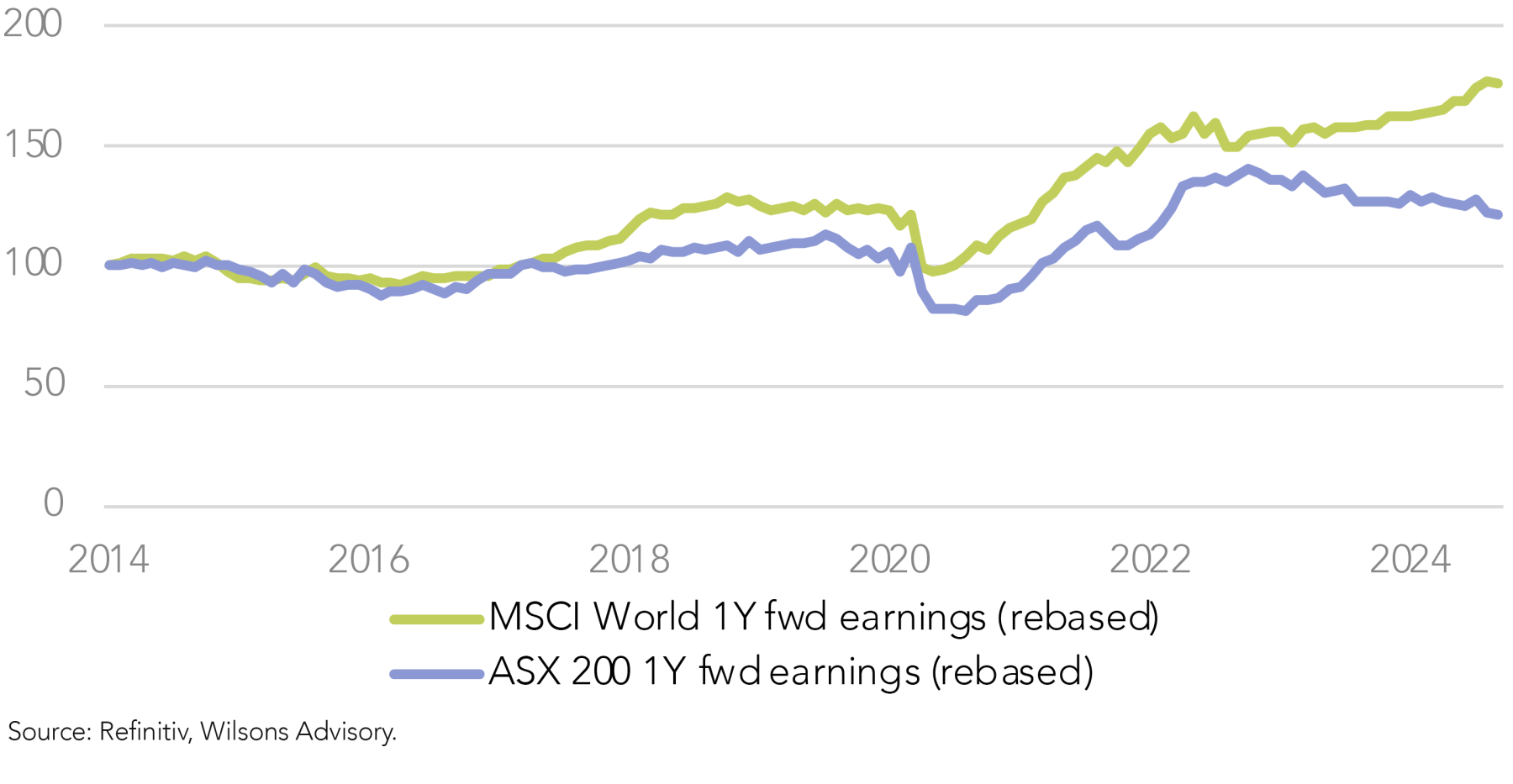
PE expansion lifts the market
PE expansion has been the driver, with the market multiple lifting from 14.4x to 18.3x over the past 12 months. This compares to a 10-year average multiple of 16x and a 20-year average of 14.7x. While the market’s strength this year is stark in the context of zero earnings growth in 2024, the market of course looks forward. However, the 2025 earnings outlook still appears relatively pedestrian, with only mid-single digit growth likely. Indeed, one-year forward estimates have been downgraded over the last three and six months.
2026 may prove to be a better year for corporate earnings, on the back of an improving domestic and global economy as monetary easing reaches maximum impact. It is still hard, however, to get excited about the structural earnings growth backdrop for the Australian equity market, given the market’s banking and iron ore mining skew.
Figure 4: Elevated valuations are also apparent in global equities
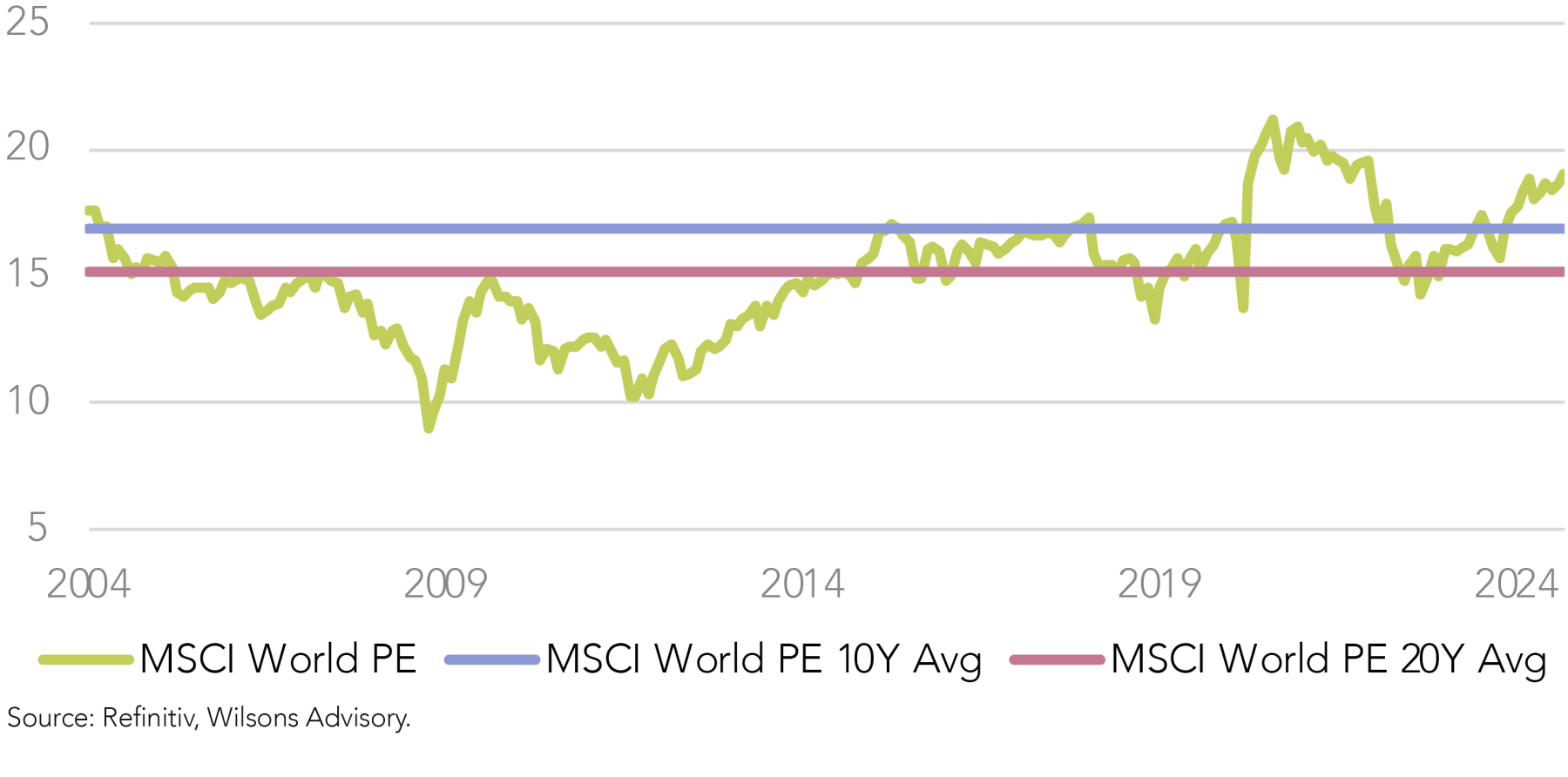
Figure 5: Australia's market PE is well above its long term long term average
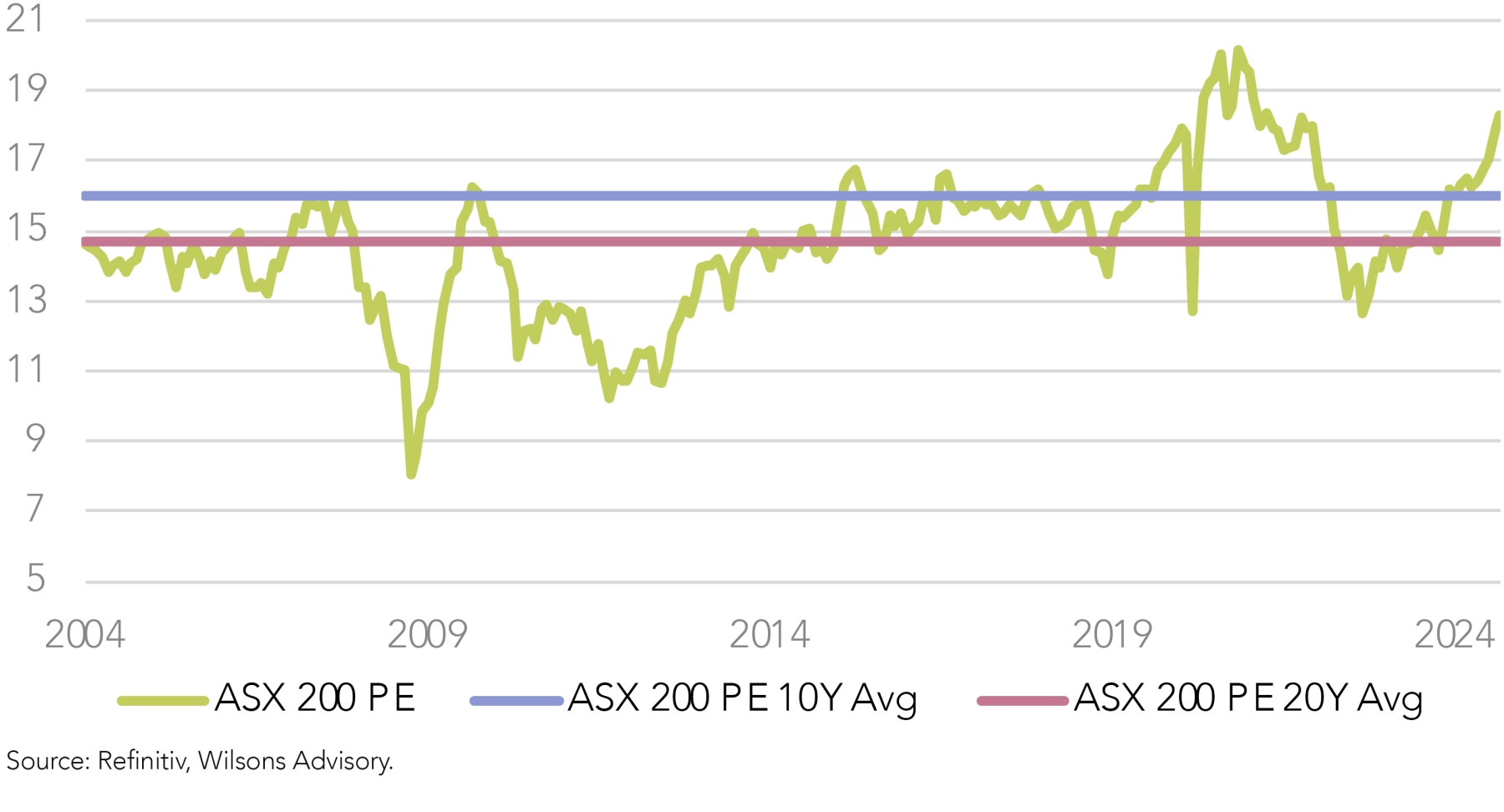
An All Industrials bull market
Closer inspection of the market’s PE re-rating reveals that it’s been driven by the “ex resources” portion of the market (All Industrials). The All Industrials multiple has expanded from 16.7x to 20.7x over the past 12 months.
This compares to a 10-year average of 16.9x. In contrast, apart from the uptick in the past few weeks on China stimulus hopes, we have not seen any significant re-rating in the resource sector, with the sector’s multiple quite close to average at around 13x.
Sentiment toward the resource sector could be on the cusp of a more sustainable improvement if China policy impetus proves to be a genuine pivot. However, China’s exact policy measures are still a source of uncertainty, alongside the looming US election. Investors should gain more certainty on the outlook for Chinese growth and resource sector prospects over the next few weeks. Valuations nonetheless do appear to be undemanding at present, and we remain moderately overweight.
Figure 6: Australia’s re-rating has been driven by the all industrials
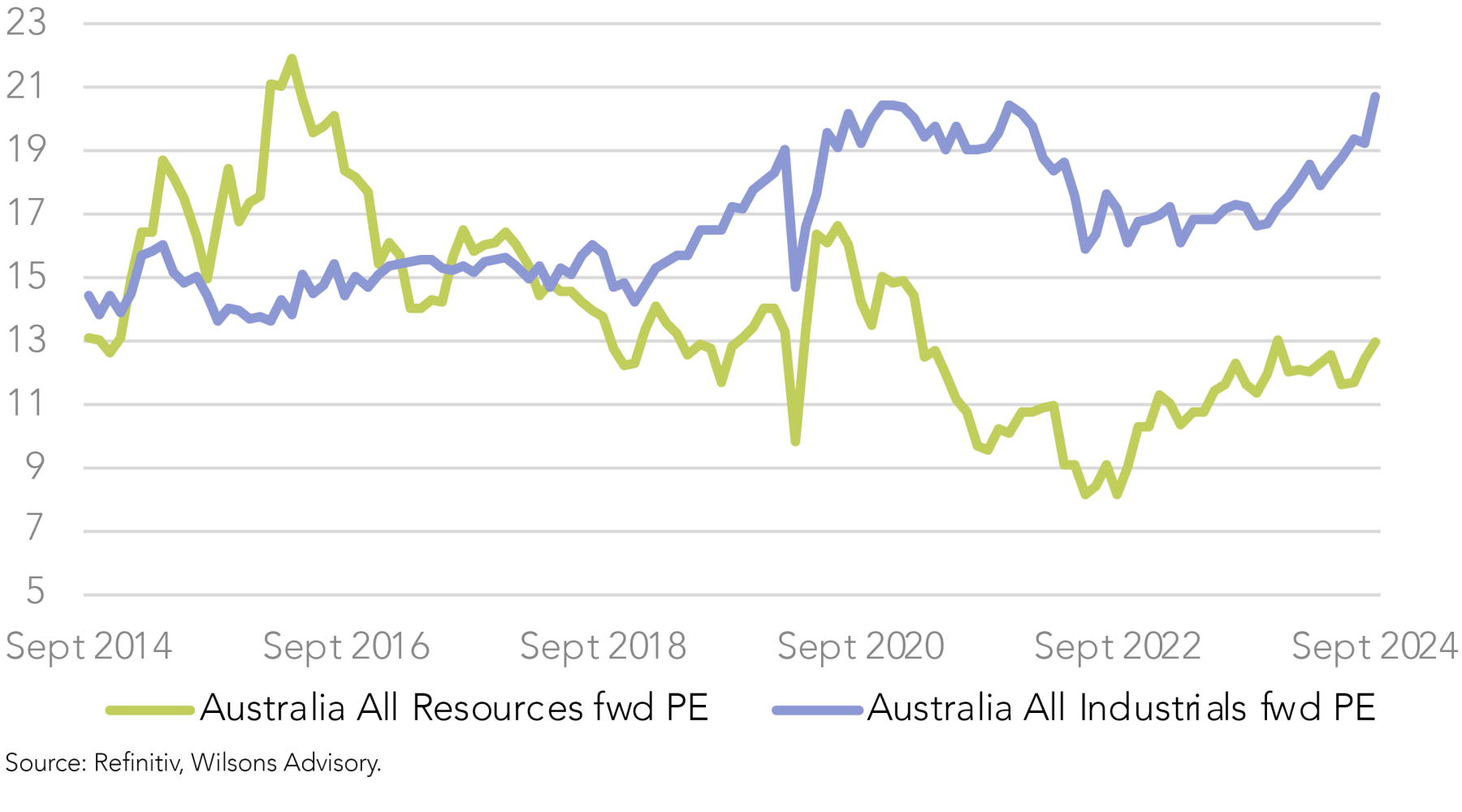
Low growth banks leading the re-rate
Breaking down the market’s re-rating down to key sub-sectors shows the banking sector has been the key contributor over the past 12 months. This is despite delivering no earnings growth over the past year. The banks at 17.5x expected earnings are also well above their 10-year average PE of 13.5x. While much smaller in market cap terms, the local IT sector is actually the sector showing the largest premium to its long-term average valuation. We would note that in contrast to the banks, the sector has delivered significant growth over recent years, and is expected to continue to grow rapidly over coming years. The composition of the sector has also changed dramatically over the last 10 years, as companies with genuine global growth potential have become a significant part of the sector. In terms of sectors that look attractive, healthcare stands out as offering an attractive combination of a discounted multiple to its average valuation and attractive long-term growth. We remain overweight healthcare.
Figure 7: Banks have led the all industrials re-rating
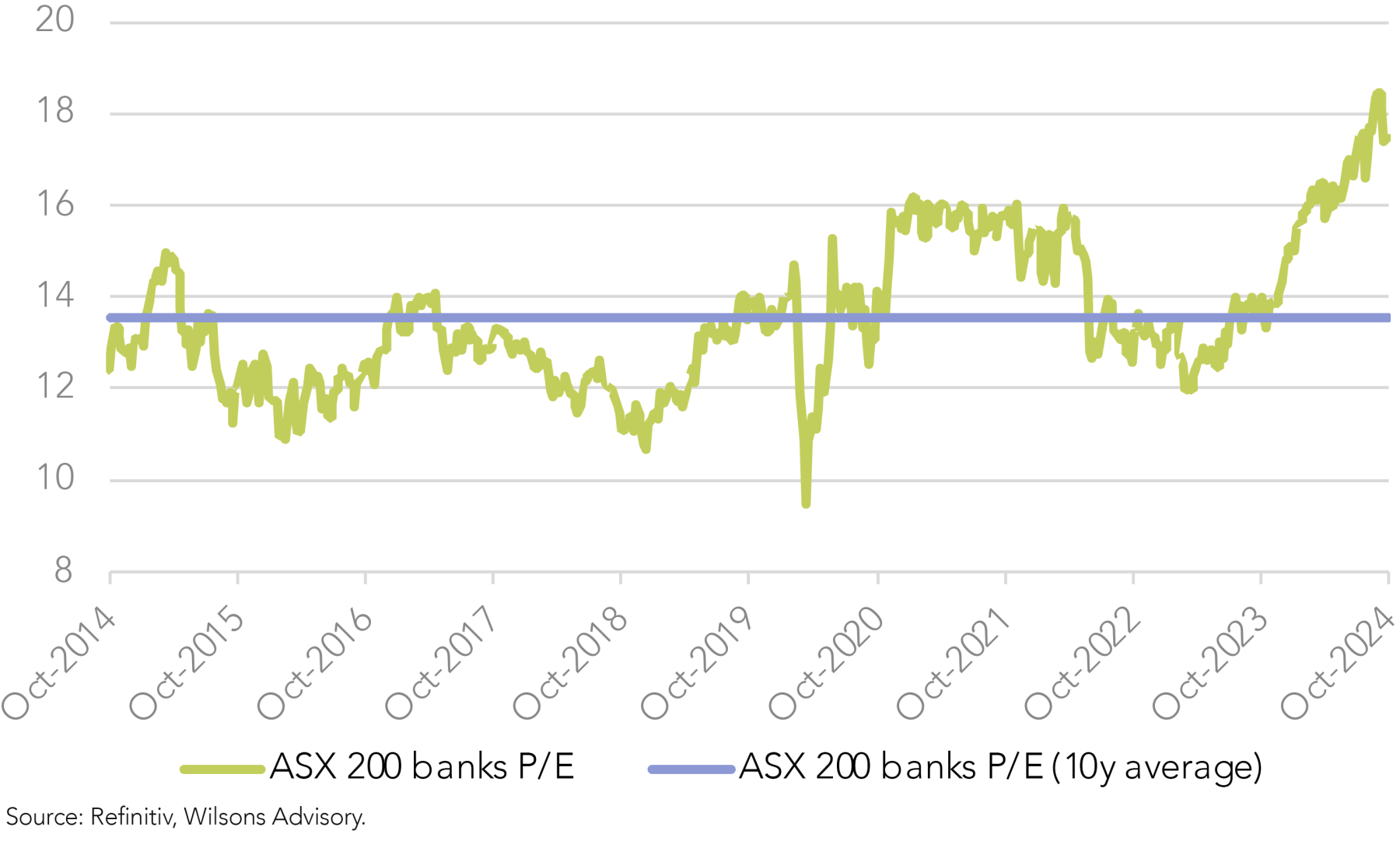
Figure 8: Australian sector valuations versus history

Large caps mostly look fully priced
From a stock specific perspective, all the big four banks stand out as looking stretched, given their high multiples but low expected growth. Commonwealth Bank (ASX: CBA) in particular appears expensive.
Macquarie Bank (ASX: MQG) also looks expensive at a headline level - however, it does appear to have a promising earnings growth outlook.
Similarly, Goodman Group (ASX: GMG) is on a high PE versus its historical level, but has a good growth outlook. In contrast, Wesfarmers (ASX: WES) looks expensive relative to its moderate growth outlook. CSL (ASX: CSL) looks to offer a reasonable valuation with strong growth. Finally, energy play Santos (ASX: STO) offers reasonable growth at an undemanding cheap valuation.
While there are reasonably priced options within the market, it is hard to escape the conclusion that the large cap end of the Australian market is, on average, fully priced. In our view, this suggests that an active approach to the Australian market is required.
Figure 9: Many of the 20 leaders are trading on full multiples versus history

Supportive macro but full valuations
The Australian equity market has been dragged higher by global equity tailwinds, despite a lack of underlying earnings growth. The global and domestic macro backdrop still appear supportive for further gains in equities. A full Australian index valuation tempers our enthusiasm for the local market however, with banks and a number of other large caps appearing fully priced. Our overall asset allocations have us slightly underweight Australia and neutral global equities, while we are overweight fixed interest/credit and overweight alternatives.
Access our latest thinking
Wilsons Advisory think differently and delves deeper to uncover a broad range of interesting investment opportunities for their clients. To read more of our latest research, visit our Research and Insights.
6 stocks mentioned

